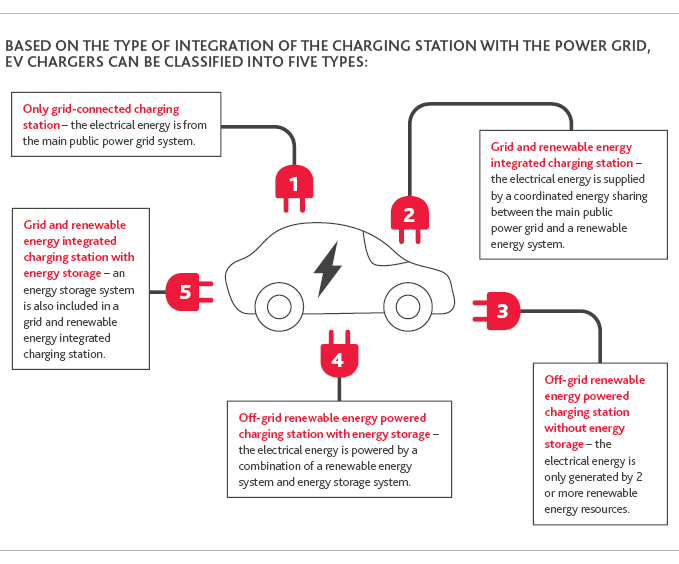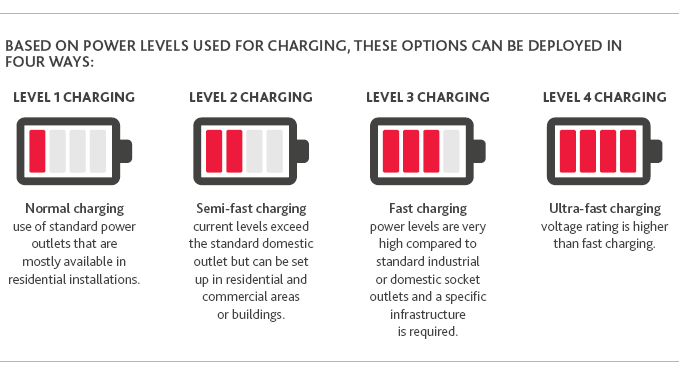Prepare to Shift – Adding Electric Vehicle Infrastructure For Today’s Automotive Retailers
With automotive OEM’s expanding their Electric Vehicle (EV) offerings with ever more attractive models and range extending capabilities that allow consumers to drive ever farther, the market is poised for significant growth. With US governmental incentives reaching more than $180 billion in 2022, and private investors pumping in more funding, automotive dealers need to start rethinking their business models and dealership platforms to support the new market need. So how do they prepare for the broad cultural shift underway alongside the rapidly evolving retail model? Will the avoidance to change cause traditional thinkers to become laggards and lose market viability?
The EV Market Overview
DEMAND FOR EVSIt’s important to ground these questions by first understanding the increasing consumer demand for EV. The International Energy Agency reported that 60% of U.S. drivers are considering buying an EV today. However, those same drivers admit to largely not knowing what is required to own an EV and importantly the looming issue – the charging infrastructure required for EVs. This is not just the public infrastructure, but the infrastructure needed at home or within the workplace. Equally important is the infrastructure at the dealerships to support “at the ready” delivery and maintenance of EV inventories.
EVS AS THE NEW PRODUCT
Today internal combustion engine (ICE) vehicles are well understood by the public and have been for almost 100 years. There are thousands of vehicle choices supported by millions of service stations, no range limitation other than finding the next gas station, and a massive public infrastructure already in place. Dealers can store thousands of vehicles for “at the ready delivery” with as little as a short delivery prep and a top off of the gas tank. Other than large plots of real estate, dealers only need to focus on their sales, delivery, and service infrastructures to support their customer long term value goals.
EVs change that considerably. Yes, the idea that we can get in and go with a new green conscious is wonderful, but the need for an ever-expanding EV charging infrastructure(s) starting at the dealership, expanding to the owner’s home, and into the highway network must become a central strategy and impetus for today’s retail dealerships. Doing so ensures consumers have available product, know how to adapt to the new requirements of EV and can build new confidence in the product shift.
Understanding the EV Charging Infrastructure
To promote the adoption of EV, it is very important a proper infrastructure is provided to customers for recharging the vehicle. The technology should be convenient, reliable, and fast. Optimization of the EV charging infrastructure requires proper planning in terms of location and size of the charging station. A large charging station can have a higher number of chargers to serve more EVs but at the same time, it will require higher electrical energy and construction cost.
Planning and operation management of the charging stations are crucial for understanding costs including the level of charging, number of charges, space requirement, type of charging station, and energy storage technologies to be used. Analytics of the charging station network enables charging scheduling to support grid operation, minimizing the waiting time for charging, leading to a smooth charging operation for the dealerships.
Software tools are very useful in planning and designing, and for simulation and optimization, of the EV charging station infrastructure, including the distribution system and charging demand, as well as reducing construction cost. These tools can rationalize costs and potential profits by determining the station capacity and EV fleet size.
EV INFRASTRUCTURE REQUIREMENTS*
Even as dealerships have added Hybrid and full EV models, many lack the knowledge of how to plan for the requirements of EV charging. It isn’t simply adding a few charging stations. Rather, a broader consideration of the need for hundreds of networked stations across inventory lots that extend into service bays and into dealership sales floors is required. Understanding the complete EV charging infrastructure means dealerships can ensure available inventory for a frictionless sales process, long-term ownership, and service availability for consumers.
An electric vehicle supply equipment (EVSE) is an integral part of EV charging infrastructure. It supplies electrical energy to EVs for charging from different energy sources. Its classification depends on a wide variety of factors including the type of power supply, type of integration of the charging station with the power grid, power levels used for charging, type of charging infrastructure, mobility, direction of power flow and OEM requirements of the EV vehicles a dealer has in inventory.
An EVSE port provides power to charge only one vehicle at a time even though it may have multiple connectors. The unit that houses EVSE ports is sometimes called a charging post, which can have one or more EVSE ports.



EV CHARGING STATION INSTALLATION COSTS
The average upfront cost of installing a single Level 2 EV charger is about $6,000. Multiply this by 5, 10, or 20 chargers and a commercial station may have a price tag of $30,000 – $120,000.
However, due to numerous incentives across the nation, the property owner may not have to pay the full price. The federal EV tax credit offsets up to $30,000 of these costs, and local incentives can chip off more. For example, a publicly available station installation in Michigan can qualify for up to $5,000 off per charger. For a 10-charger installation, that’s $50,000 off the original price.
Preliminary design requirements, site prep, and installation
Charging Up The Sales Strategy
THE EV INFRASTRUCTURE PITCH
Building out the EV infrastructure on a retail lot can provide a physical anchor around which dealership staff can develop a sound sales pitch. Once the salesperson has the customer’s attention, the salesperson can highlight every feature of the solution while answering frequently asked questions. Giving customers the opportunity to ask questions and receive answers in real-time is a critical part of the sales process that internet research can’t duplicate.
REMOTE MONITORING OF EV INVENTORY AND CHARGE LEVELS
Managing inventory is always a challenge for auto dealers. A typical dealership might rely on porters for many out-lot management duties, such as performing routine vehicle checks and bringing vehicles to the retail lot as needed. A charging infrastructure can adopt vehicle location and charge analytics that help dealerships remotely identify a vehicle and monitor its charge level while in service or in storage all through a mobile app or dashboard. Having a smart, comprehensive, integrated charging station ecosystem on your lot is a good way to make sure customers have a full charge whenever they pick up their vehicles. The ability to monitor EV charging for vehicles being serviced can also help dealerships manage costs associated with charging and determine how much of the cost to pass along to customers.
VEHICLE READINESS
Once a customer makes a decision about a car they want to test drive, much less buy, it’s critical for that vehicle to be in a drivable condition. Dealerships can use analytics to identify when they see a spike in test drives and make sure they have a bank of cars charged and ready. The last thing a customer wants is to wait 30 minutes or longer while an EV charges. A wait time as short as 10 minutes could mean the difference between a $50,000 sale and a lost customer.
CHARGER REVENUE OPPORTUNITIES
As a dealership starts selling more EVs, they could shift resources from their existing service department to a new EVfocused service department that installs branded residential chargers at their customers’ homes.
Offering EV chargers for sale can open up a number of opportunities:
-
Retain or increase service revenue: Depending on the volume of EV sales, a dealership could find that installing branded EV chargers for customers could more than offset the loss of traditional service revenue.
-
Increase brand awareness: Having more branded EV charging stations around town is a great way to increase brand awareness and establish a dealership as a local EV authority.
-
Expand local EV infrastructure: The more charging stations people have in their homes in a given region, the more familiar and comfortable people in that region will be with purchasing EVs, thus creating a rise in EV ownership.
Working With Public Utilities
LEVERAGING LOCAL UTILITY PARTNERSHIPS
Like any business, dealerships should always look for creative ways to reconfigure their operations and optimize profits. For example, a dealership might engage with their electricity utility to offset the cost of installing EV charging stations and/ or the increased electricity usage. Many utility companies offer deals and incentives for businesses that install EV chargers— but it’s important to note that networked chargers are required for certain utility incentives. “Networked” chargers are those that integrate with utility companies and have the capability to monitor power and other data.
USAGE ANALYTICS
Dealerships can further reduce electricity costs associated with EV charging by carefully measuring electricity usage and monitoring electricity costs. Certain regions experience electricity usage spikes that increase electricity costs. It’s important to reconcile EV charging needs with fluctuating costs by developing strategies to charge EVs at times when electricity is cheapest. Analytics can alert a dealership when electricity prices approach peak load demand, giving the dealership the opportunity to reconfigure their power usage (e.g., temporarily switch to a standby generator during hours of peak usage or adjust their charging schedules to nonpeak times).
Paying for EV Infrastructure Investment
Dealerships can cover up to 100% of their construction costs through all sorts of initiatives, at the federal, state and local levels. Below are a few examples of the various programs dealerships can take advantage of to offset the cost of EV infrastructure.
At the federal level, the Alternative Fuel Vehicle Refueling Property Tax Credit (or 2020 30C Tax Credit) will offset up to 30% of an EV charging station’s total purchase and installment cost, up to $30,000 through the end of 2021. It’s predicted this credit will be extended past 2021 and may even increase.
More and more states are offering tax breaks for businesses that install EV charging stations. Currently 45 states, Washington D.C., and many utilities incentivize EV charging station installations with EVSE) programs. Additional incentives may be available and vary by state. For example, in Michigan, the Consumers Energy PowerMIDrive program provides a rebate for businesses that install publicly accessible EV charging - up to $5,000 per Level 2 charger, and $70,000 per DC fast charger. In New York, the Charge Ready NY program provides a rebate of $4,000 for each installed port. In California, PG&E covers the costs and manages the construction of electrical infrastructure needed for Level 3 chargers.
Local municipalities and private interests offer EV grants for a variety of reasons. For example, entities like the Mojave Desert Air Quality Management District, offer an electric vehicle charging station program that can cover up to 80% of EV infrastructure costs.
Identifying incentives is one thing—applying for and being awarded grant funding is another. The process of securing funding can be overwhelming to a dealership otherwise focused on normal business operations. For example, a dealership may need to produce and submit documentation like one-line electrical diagrams for funding consideration.
HOW BDO CAN HELP
*source: MDPI/ US Department of Energy
SHARE